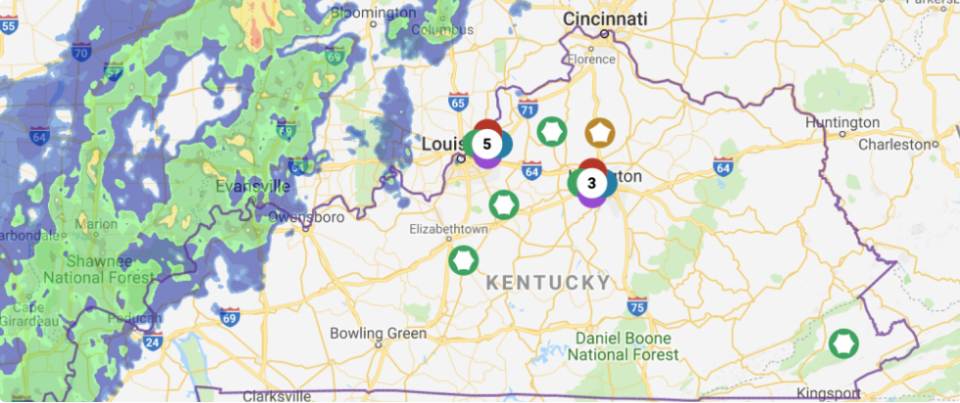On any given day, the fastest fliers in the world can be found performing acrobatic dives
and maneuvers — at speeds up to 200 miles per hour — at many LG&E and KU power plants.
Peregrine
falcons, once on the brink of extinction, are making a big comeback in Kentucky thanks, in part, to the
dedication of employees at many of our facilities who ensure nesting boxes provide a safe setting for the
birds to prosper.
The crevices and alcoves of power plants remind the falcons of
their natural nesting environment on mountain cliffs and ledges in the West. The plant setting also offers
an all-you-can-eat supply of pigeons and other flying food.

2010 has been a productive year for the species, with 12 hatchlings so far at facilities with
nesting boxes, including LG&E’s Trimble County and Mill Creek Power Stations, and KU’s Ghent Power
Station.
Late last month, the Kentucky Department of Fish and Wildlife
visited Trimble County to band the four new peregrine falcons.
Each bird
received two bands: one that identifies the bird as coming from Kentucky and another for the Midwest region.
The bands have different colors and number codes unique to each bird, which are inputted into a database
along with the bird’s gender, date of hatching and nesting place. This database is available for all
departments of fish and wildlife in North America as a way to track the falcons.
KET’s
Kentucky Afield documents banding at Trimble County
Trimble’s
latest falcon additions were the focus of a recent episode of Kentucky Afield, a nature and
wildlife-oriented television show on KET. Watch the banding
yourself and learn more about our
falcons. It’s the next best thing to seeing these unique birds up close and in person.


